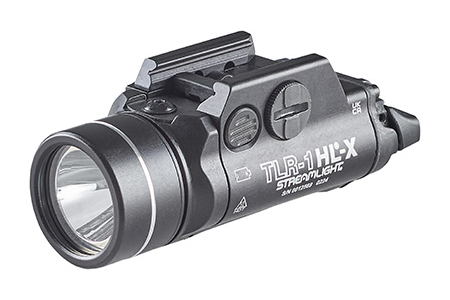The events of recent hurricanes, like Gustav and his closely following sister, Hanna, are well known.

How well we understand the past can prepare us for the future. My intention for writing this is to take a serious look backward for future planning and strategies from present day events and incidents.
To me history is always very interesting. What I have challenges
with is how difficult it is for many of us to learn from it. I intend to
use my own experiences from weathering both hurricanes, Katrina
and Rita, just a few brief years ago.
As in anything of value and direction, leadership must be paramount. It is especially true when a crisis comes to hand.
The truly visible leader can make or break the outcome of any event. I have found that being prepared as a leader in the correct disciplines is everything.
Then by being a touchable and defined force for your troops, your leadership becomes valued while adding strength and reassurance to all who see you as part of the solution.
I personally respond to many calls, and may not have to directly contribute my skills at that particular time. But it gives my people the sense that the top commander does care about the daily
workings of the organisation and its membership, especially when
the heat of battle is underway.
Today’s international fire service is directly involved on a wide scale of crisis and emergency response. We no longer concern ourselves with only fires and assorted rescue events.
The fire service has become a multi-disciplined and multi-trained emergency response force. Thus, the lessons learned here from these hurricane disasters can be applied throughout a broad array of incident preparation and reaction.
Communications should be at the forefront. Hurricanes will bring
down information exchange networks by an assortment of factors.
Wind alone being a primary cause with its force for blowing over
towers and masts. Without question, cell phones are fragile and
should not be a primary means of information.
There is value in Ham Radio operations, especially for areas that have become severely damaged, and without the scope of any short term recovery with on site repairs.
Spare batteries for everything else should be obtained well in advance, and don’t forget your portable radios and hand lights. A word to the wise is to fully charge them a day or two in advance of the pending event.
Someone always puts things off and then it becomes too late. If wireless and hardwire communications fail, then one must resort to a courier based set of operations.

Does this sound like a scene from World War II? A written and practiced plan should be in place. Couriers have been an established way of doing business for centuries. The Roman Army perfected this well.
The deliverance of timely and progressive information is the lifeblood of any operation.
Since we are extremely dependant upon electricity for everything,
it is of solid value to have sufficient auxiliary power to sustain your
operations.
If you must utilise generators, then consider the proper model and fuel type. Portable generators are for the most part based upon a consumable hydrocarbon fuel, while the latest trend for permanent devices is to use natural gas driven engines for prolonged operations. The supply of natural gas in most areas is virtually unlimited.
In relationship to any type of mechanical equipment, it is imperative to secure an around the clock mechanic or technical support service agreement to include a spare parts provision.
You might have a memorandum of agreement or a service contract
in place in lieu of not having a mechanic or technician on the duty
roster.
Thus, I strongly recommend that a second reading of this document be accomplished, as there might not be a clause for a mechanic or technician to come out in adverse weather conditions, nor have an adequate supply of parts to ensure an immediate restoration of mission essential and critical equipment.
Refueling becomes a challenge for any device requiring sustenance over long periods. If you respond to a major fire and the engine companies start flowing water at or near their full capacity, then it’s no different than driving down the roadways at high speeds.
Even artificial light towers operate under a full load. Fuel is quickly consumed. Again, if fuel is a service that you have contracted for, then review the wording of the agreement.
You might not get the service under true emergency conditions or the elements of adverse weather.
Since repairs and refueling are closely allied to the direct support
of emergency equipment, there might be a need for pre-staging or
quartering these acquired assets. Bringing this type of assistance
in early might negate any adverse weather travel for ensuring that
on-site mechanical and technical support is secure and present for
the emergency responders.
Speaking of fuel, this brings forth a closely related issue. Are there provisions for emergency responders to obtain fuel for their personal vehicles? It is just as important for them to draw fuel to get to their respective duty stations, otherwise you might not have workforce showing up at roll call.
They would be subject to a frustrated and hackneyed arrangement of trying to locate some scarce source of this urgently needed commodity for all segments of society under less than ideal conditions. After all, we’re not fueling up for a holiday getaway. A little advance planning here pays off big dividends in the morale department also.
Speaking of support and morale, since emergency responders are key and essential personnel, then you are responsible for maintaining their 24/7 presence.
You are now obligated to support their personal and hygienic needs. Hunger, rest, downtime, and life’s daily necessities between calls must be addressed.
Is hot water available?
How will you feed and mess nourishing meals?
Will an ice machine be required?
Are sleeping quarters in the mix also?
These questions become elevated if you require your entire workforce to be present. This act alone doubles your overall needs. Even office and operations space becomes a premium article.
Your adopted and extended family of your firefighters, with their needs and requirements, becomes involved here too.
Is there an action plan to see that they are checked upon in a timely and rotational manner? Will travel distance become a roadblock?
Have you permitted sufficient leave time for your team of professionals to assist their respective family members?
This must be balanced into the big picture. By ensuring that your emergency team’s family is in good condition frees the mental drain state of the responders to perform clearly. You do not want a negative draw against their thinking at any time.
Staffing and manpower requirements are major factors in how
the whole mission gets delivered to those who need our services.
One item that I have personally appealed to is the use of volunteers over mandatory assignments for extended operations. In most cases there is a welcome response to establishing this duty roster.
I have asked the single members to please “step up” and permit their parent team members to spend their limited off duty time on family care concerns. Morale jumps through the roof when everyone becomes their brother’s keeper.
Apparatus and equipment assignments can be detailed in several ways. If you plan to use reserve apparatus to bring additional tools and specialised hardware to various incidents, then manpower can be utilised in a modular concept.
Years ago fire engine companies operated with two-pieces of apparatus. There was a pumping engine and a hose wagon. Two pieces responded as one company. The men, divided between each apparatus, brought specialised equipment to the scene, yet operated as one unit.
Today’s military is forming new warfighter teams in much the same fashion. A combined set of military skills is unified in a total team package.
The same can be delivered under emergency conditions. If you have a need for both fire and EMS delivery in a given area under trying conditions, then this might be a limited answer.
By taking the manpower from a single four man engine company and dividing the membership into a modular concept, you could place two members in the EMS unit and run the engine along with them.
This places two specialised pieces of equipment at a scene with trained personnel who can decide upon the correct course of action.
Their specialised apparatus is right there with them. If you do not have any spare or reserve apparatus, then you could also utilise your extra manpower to run as an “enhanced” company. You might have a spare firefighter who possesses a high technical skill to create your “enhanced” company.
A uniquely trained firefighter can empower a routine fire company with attributes of a specialised delivery during times of crisis. The four man engine company can be riding out with five members to provide this “enhanced” service. A simple example of placing an ALS paramedic with a BLS crew would support this concept.
One might not need to go very far in the development of better ways of delivering emergency services. A simple review of past history in recognising successes and methods of improvement can give insight towards what really works and what should be avoided.
The use of an After-Action-Review (AAR) can support all that
went right and all that needs further work. Even if the operation
was flawless, and that does happen with well trained and motivated personnel, the AAR serves to reinforce good practices plus it sustains the high morale of the crews. History does provide lessons learned.
Michael Kuk – Biography
Michael L. Kuk, PhD., CFO, CHS-V, MIFireE is Fire Chief for the Joint Readiness Training Center and U.S. Army Garrison at Fort Polk, Louisiana. In addition, he serves as the Chair of the CBRNE Working Group. He previously served as the fire chief for OLIN Chemicals and PPG Industries in Lake Charles, and the Ward 1 Fire Protection
District of Moss Bluff, Louisiana.
His work history also includes serving as the last fire chief at Savanna Army Depot, and the prison chief at Fort Leavenworth, Kansas. He has conducted extensive research on firefighting history since Roman times and extensively writes about Federal and Department of Defense firefighting subjects, including Homeland Security.
Kuk has been a published fire service author since 1974. A Vietnam Veteran, he served as a U.S. Army station chief firefighter at Long Binh from 1970-1971. A 2006 Inductee of the Rock’n’Roll Hall of Fame with his band of the 1960’s, the “Union Jacks”, he continues to perform as a master musician at firefighter, military, and civil ceremonies throughout the year in many locales. In 2009 he was the first Inductee into the U.S. Army Hall of Fame Fire Chiefs.
He is a founding member and Chair of the Federal Firefighters Memorial Committee and a Federal Fire Chaplain. A longtime member of the International Association Fire Chiefs, Kuk has led volunteer, combination, industrial, and military fire departments. His hobby is collecting fire memorabilia, especially items pertaining to
Saint Florian.











